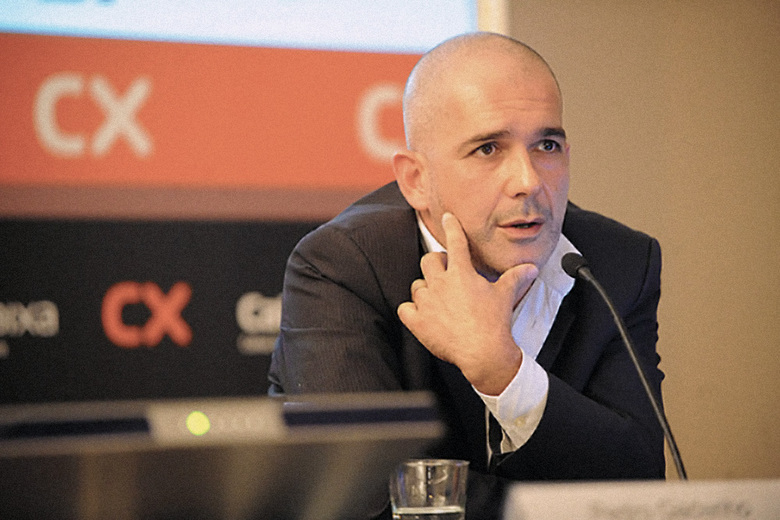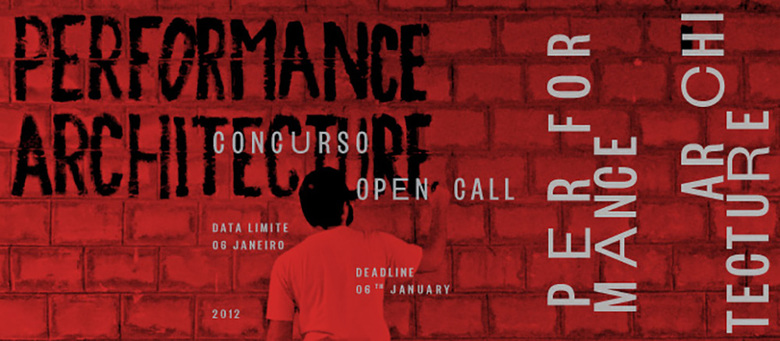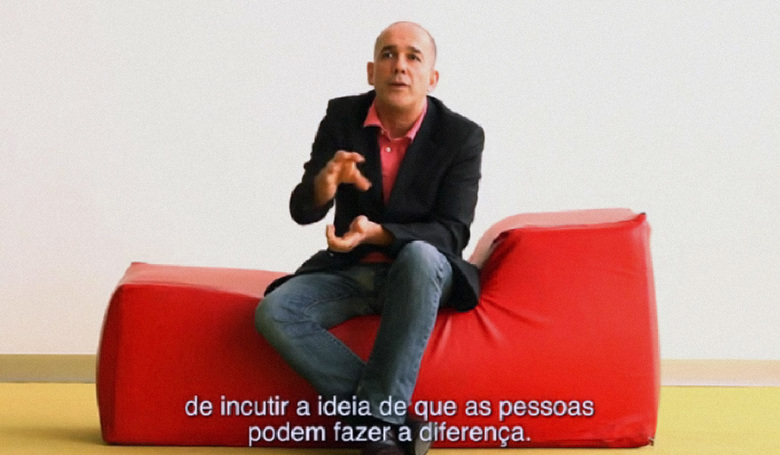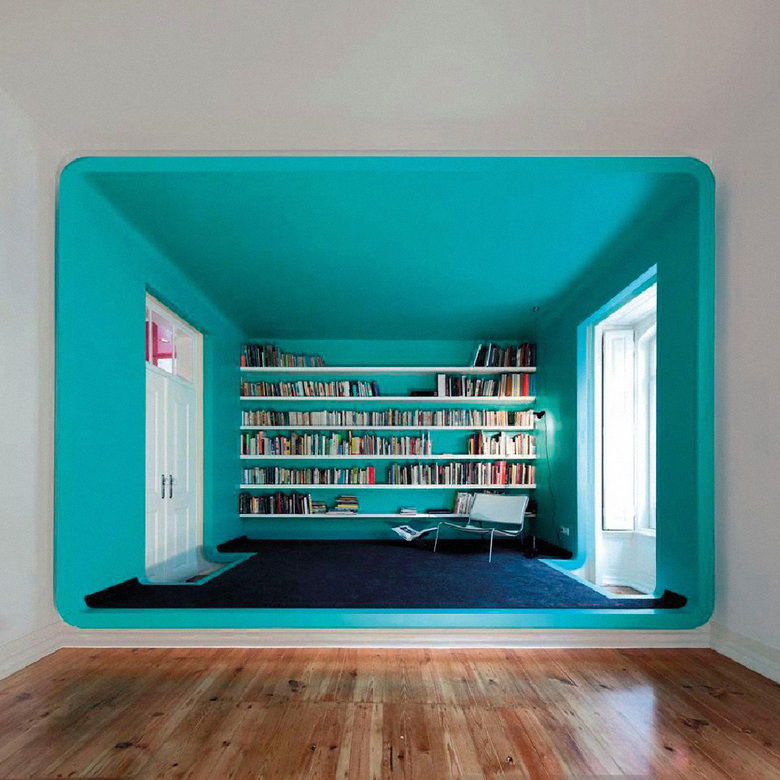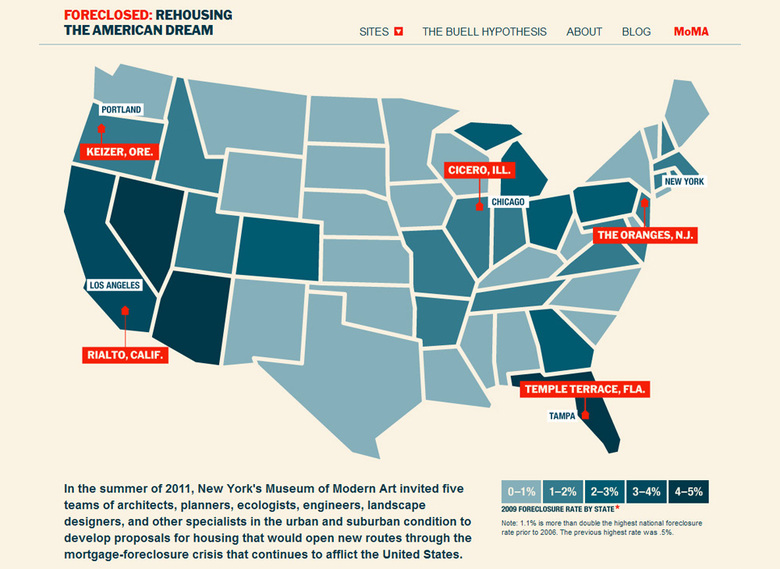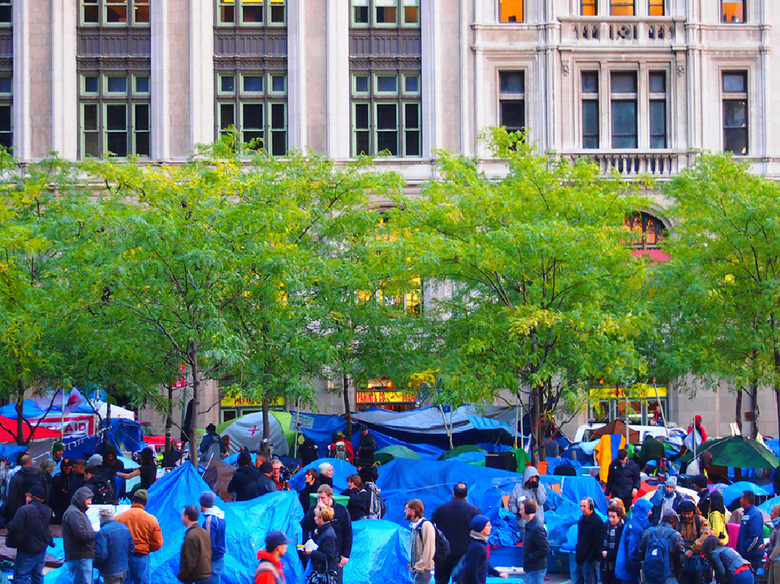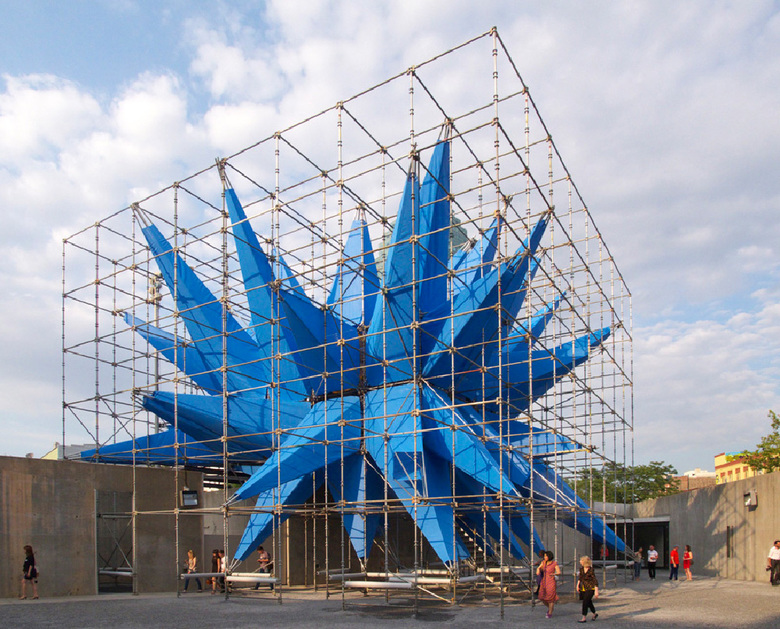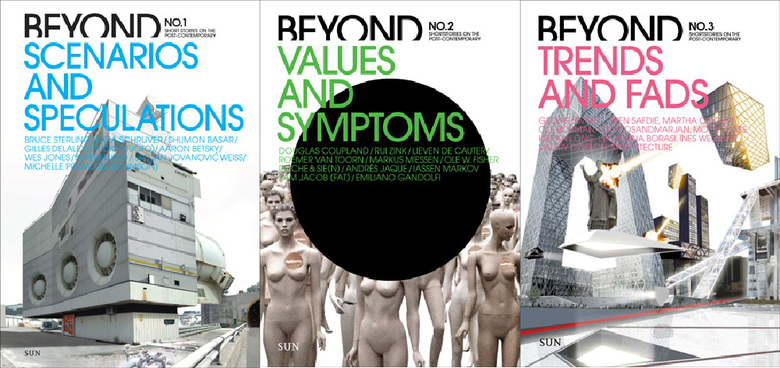Curating Contemporary Architecture with Pedro Gadanho
John Hill
2. de juliol 2012
Photo of Pedro Gadanho by BIArch - Barcelona Institute of Architecture, via flickr
In December, 2011, the Museumof Modern Art(MoMA) appointed Portuguese architect Pedro Gadanho as its Curator of Contemporary Architecture. World-Architects met with Mr. Gadanho to talk about his new responsibilities at MoMA, how his background informs his curatorial post, and his ideas on architecture’s relationship to art, literature, and other cultural productions.
How did the post at MoMA come about?Curating was one of my activities, but one that I was questioning in terms of where I wanted to go. It was hard to maintain that activity — Portugal being a small country — even if I was doing more and more things internationally. Although I used to take opportunities as they would come, my architectural activity was becoming more visible and having quite an interesting reception, so I was questioning if I should continue curating. As a last option, however, I decided I had to apply to an international position that would allow me to explore curating in depth.
I always enjoyed the privilege of developing my own curatorial ideas, but it was also quite a hardship to sustain them as a freelancer. That's the difference between being a freelancer and being with an institution though obviously there are similarities in the need to pitch and support ideas for a project. As a freelancer, you get these intuitions on what is taking shape in a certain area; then you start researching these notions and come up with something you want to put together for a wider audience. But then you have to find the partners to put the ideas in motion, work in fundraising, and so on. This was very demanding, it was hard to find the right partnerships for each project, and ideas would take a lot of time to be achieved. That was, let's say, getting me down, making me give up on that activity.
In Portugal I had done the Venice Biennale in 2004, the National Architecture Exhibition, Habitar Portugal 2006-08, and projects for both the European Capitals of Culture taking place in Portugal over the last decade, so there was a moment in which I could not foresee other opportunities for large-scale curatorial projects. That’s when I started applying for positions outside Portugal. The first one was the Storefront for Art and Architecture, for which I came up on the short list. And then the announcement for the MoMA position came about. I sent in my resume, and that was the beginning of a long process of interviews, discussions. I didn't know Barry Bergdoll [Philip Johnson Chief Curator of Architecture and Design at MoMA] before, so it was a true recruitment process, and a very interesting one from my point of view. It went through human resources, department managers, having interviews via Skype and then personally, seeing curators, presenting ideas, and discussing my previous experience. Then, finally, I was chosen from about 85 applicants worldwide.
Performance Architecture: European Capital of Culture 2012 – Guimarães, Portugal
What sort of ideas were you bringing at that time?I was discussing some ideas that I will be working on, but that I can't disclose right now. Some others I can talk about, because they were there already, like the Emergent Megalopolis, about emergent and urgent creativity in large, growing metropolises. I was working on that project for a while, and I thought MoMA could actually be a platform to find the resources to realize such an ambitious idea – one that would involve artists, filmmakers, and other agents making video pieces about problematic cities and their urban practices. Even if it takes time, MoMA seemed like the kind of institution that would have the ability to fundraise, organize, and enjoy the inter-departmental connections that would enable a project like this. I’ve just started to discuss the idea internally, but because it's not a typical installation, I still don’t know where it could end. It could include film production, autonomous art pieces, and organizing installations related to urban condition. It's an ambitious project, both thematically and in terms of cost. I hope that will be one of the projects I end up realizing while at MoMA.
I also discussed possibilities of studying the relationships between photography and architecture, which are quite important at the moment. MoMA presents the opportunity of widening and deepening that kind of understanding, namely because of the collection’s important holdings in that domain.
Indeed, even if I was aware of MoMA’s collection, the impact it has on my position was one of my great discoveries. Throughout my interviews for the job, I truly realized the importance of curating the collections, finding strategies to permanently reinterpret their content, but also by leaving a mark in terms of what is brought in that is relevant historically. In those terms, for instance, I could rely on an experience that is closely connected to the art world. Maybe indeed collecting architecture can be more related to the strategies that are in place when you talk about the art world, which involve both looking at — and legitimizing — very recent trends, but also filling in the gaps in what is historically important.
Performance Architecture, A Talk with the Jury, video screenshot with Pedro Gadanho
So one of your responsibilities is adding to that collection. And your position is Curator of Contemporary Architecture...Yes, this is a position related to everything that happens after 1980, a date one discovers at MoMA’s galleries as correspondent to contemporary production. So, I'm actually dealing with that particular period, proposing acquisitions, and in a way also defining strategies on how to do that, what criteria to use, etc.
It was interesting that Barry Bergdoll told me at one point that he wasn't so worried that my knowledge of American architecture was coming from a distance. Although I know the major players, I would not be considered a specialist in American architecture. But he wanted me — and I thought it was very interesting to hear this from him — to be an ambassador to the world in MoMA; that is, bringing in projects that are not so well represented in the collection because MoMA has been, in general and with considerable exceptions, very centered in American production. Over the last few years, however, MoMA has shown an increasing interest in internationalizing the collection, in bringing in other geographic inputs, and also to assume more and more of a role in terms of the contemporary, as opposed to only the modern. So, in fact this is where I think I can help, because indeed I feel very connected, very open to different scenarios, and have always been very interested in what is happening in different geographies, in the developing world, in Europe, in Asia, and so on. I was already very keen on reading different tendencies happening in different corners of the world. The fact that I speak Portuguese, Spanish, French, and Italian allows fluid connections to Latin America, Africa, and so on, and that can bring other knowledge to shed on the collection, something more international in scope.
GMG House by Pedro Gadanho. Photo: FG+SG Fotografia de Arquitectura
You were talking about the Emerging Megalopolis exhibition as atypical for MoMA.It is not very typical for MoMA, considering the nature of the work that has been developed in the Architecture and Design department. If you look at the visual arts, however, it would already be a project that is in a way recognizable. Commissioning films by artists has a logic that the art world is already used to. But this is not so common in architecture, at least as museums typically have it — although the Issues series [Rising Currents, Foreclosed] that Barry has created certainly goes in that direction. This points to the question of formats and how they are differing from what we are used to in historical terms.
Certainly I deem it very important to have models, drawings and other archival materials that have been fabricated by architects, so as to communicate their work as a central part of architectural exhibitions. I think these will always be present because they represent the way people work. But other issues come into the discussion nowadays, like using video in forms that are different from a typical commercial presentation, using installations to substitute for the real experience of the traditional building, using performance, using fiction, using other types of media. So, recently we've seen architects using cartoons and graphic novels to reflect upon their work or the condition of the city. In this regard I think of architecture as a cultural production that is certainly broadening in terms of communication and thinking. And the museum has to follow up on that diversification of formats and be open to introducing other situations. In coming here I was glad that one of the first things I proposed for acquisitions was a performance piece. And it was great that the acquisition committee was very open to it, revealing an atmosphere that is open to that kind of change in perception of what constitutes material that is adequate not only for display, but also for the collection itself.
It was acquired. It will be presented on September 16 at MoMA PS1, as part of the exhibition 9+1 Ways of Being Political.
This is another aspect of the blurring of the boundaries. MoMA has been characterized by the existence of departments that are very clear in terms of their media, or in terms of addressing certain areas of practice. But maybe these areas are blurring. Suddenly architecture may share aspects of performance and video, and this may lead to collaborations within the museum. Just like an exhibition I'm proposing that would be a collaboration between the photography department and the architecture department. This potential is enormous. It also means that the museum, as an institution, is concerned with this blurring of boundaries as a practice that is developing out there in the world, and it wishes to reflect this condition.
I think the moment is very receptive to this, and one of the reasons I came onto the team is probably because I was already working on strategies of blurring boundaries. This approach brings a specific energy to the museum, I should hope. MoMA was very important historically in contributing to a sectioning of different cultural practices. This was very important for the modern period, but once the world of art starts to move beyond these sections or borders, then of course the museum has also to deal with its own tradition and definition of these borders. I think there is an awareness of this fact and the will to precisely deal with that.
Foreclosed, screenshot from exhibition web page
I've noticed that Barry Bergdoll alternates between activist exhibitions like Foreclosed and Rising Currents and ones where he raids the collection and gathers certain works around a theme. Is the latter something that you will be doing?Barry has already provided me the opportunity to have my first perspective on the collection, the upcoming 9+1 Ways of Being Political. Some of the exhibitions done in that spirit in the past – Groundswell by Peter Reed, or Dreamland by Andres Lepik – are ways of looking at the collection and organizing a gaze onto it. Thus, some works emerge out of obscurity after not being shown for many years; suddenly they become relevant for a certain perspective. Looking back at the collection from a contemporary perspective is what makes the collection dynamic.
The perspective I'm taking on the collection for 9+1 Ways of Being Political in September makes it possible to have a fresh, pertinent approach to the existing materials. As soon as Barry suggested it, I immediately started looking back into the collection, trying to think of a theme that could be seen as a shared concern for our present moment. At the same time I wanted to reveal work that has not been seen for a long time, pieces that could impact on a wider audience, and choices that would obviously present a personal take. Looking at what was being discussed in the American blogosphere within those last few months, I noticed that architects were trying to take a position in regards to Occupy Wall Street. They were not, however, really able to articulate it, as if in doubt of their own ability to intervene. I thought there was a kind of anxiety — which in fact is maybe not adequate, because the work of architects is necessarily imbued with a political attitude. Architects are working with the city, with the polis, and therefore, in a quintessential Aristotelian way, they are being necessarily political.
So I wanted to look into the last 50 years of MoMA’s collection and understand how architects were political, how they revealed different political attitudes. Once I started thinking about this, I came up with very different approaches to the theme, such as "radical architecture in the sixties", "using fiction and dystopia in the seventies" – with examples by Cedric Price or Laurids Ortner, in the first case, or Rem Koolhaas and Bernard Tschumi, in the second. I started thinking about how architects dealt with the landscapes of consumption, with branding the cityscape; how architects have dealt with social borders – with participative processes leading onto social housing or with positions that confront inequality in the city. And even, coming up to more contemporary themes, how suddenly architects think about home or the domestic as a political instance. So, in that sense, this becomes an exercise where the collection allows a thesis to emerge. And this does not represent a claim that you should be political in one way or another; it just demonstrates that the work of architects can be imbued with a political message, rather than subsuming to economical power, or just working for the 1%. I think all of these issues respond to a contemporary tension, but at the same time they allow you to understand the potential of an architecture collection such as MoMA’s.
Occupy Wall Street at Zuccotti Park. Photo: John Hill / World-Architects.com
Another aspect of your role at MoMA, in addition to the exhibitions and the collection, is the Young Architects Program (YAP). Have you already been involved with that?I was involved with the jury in choosing the winner, Wendy [this issue's Found feature, designed by HWKN], and now I’m coordinating the process that will lead to its construction.
The YAP, especially as it’s expanding internationally to Rome, Santiago, and now Istanbul, is very important as it gives an opportunity for younger architects to experiment with actually building in a cultural setting. What’s interesting for me in the program is the ability to transform the little “fun palace” of sorts over the summer into an opportunity for people to engage with architecture, while giving younger architects an opportunity to build and engage with certain themes that may be part of their current preoccupations. I think YAP has shown these interesting and diverse preoccupations emerging along its 13 years — questions related to sustainability, to ecology, to low-budget conditions, and other issues that are part of our cultural landscape at the moment. It’s curatorial because in our choices we tend to pick projects that are relevant both because they offer interesting solutions to a particular problem, and because they bring up themes that can be communicated to a larger audience – in what could be also called a social responsibility of the architect. Actually, the idea of putting fun together with responsibility is very important — as much as the ability to engage people with the contributions of architecture to a society that has become far too much about pure consumption.
Although other projects put forward very interesting ideas, they were not so effective in reaching an overall architectural coherence with those ideas. So, in the end, I think Wendy won because it is both iconic and a structure that captures the attention of people, to have them join in this communal moment in which people can both have a good time and share and debate ideas. The way Wendy is addressing ecological issues related to pollution is very effective, but so is having a very strong architectural concept for economically solving the questions of that particular space and carrying a message that can be communicated to a wider audience.
Wendy installation by HWKN. Photo: John Hill / World-Architects.com
It seems to point toward the skin doing a lot more than just separating inside and outside.Of course. It also reflects how technology is being developed to solve problems we are facing constantly, problems that could become like dead ends. And so it shows technology in quite an optimistic, proactive manner. It shows that technology can also be used to make progress in other fronts, and not just falling to situations where sustainability becomes a slogan for the marketing of expensive housing and so on. Because Wendy is slightly trashy and provocative — as it uses scaffolding systems, but also a visual language that is graphic and pop — I think it brings to the fore a relational aesthetics that is definitely not about the typical pristine building that architecture culture has been proposing over the last years.
HWKN are working in a manner that I appreciate; they are working as cultural operators that connect the economical and cultural worlds. Through their networks and contacts, they are bringing in these technologies that are still at an experimental stage — and are thus expensive — in order to make them visible in a popular way. And both for the companies that represent these products, for the architects, and for us, this bridging is interesting because it allows for a very strong statement to be made. On the other hand, it addresses something that is becoming more and more important: The architect is no longer just a service provider who has a very clear place in the economical structure of building the city — the architect becomes a cultural operator, a cultural producer. So the architect does more than just design; the architect connects people, connects technologies, and connects different cultural aspects and trends.
Internationally, we are involved as part of each jury and in defining organizational strategies. Each participating entity in the YAP partnership is taking part in the other juries. This produces a set of shared principles with local resonance.
The three issues of Beyond, published by Sun Architecture
To me, with the Beyond publications, your blog, and other writings, you have a particular relationship between architecture and writing – these narratives, looking at writing as an autonomous act, writing as a pleasurable thing – so I was wondering if that same sort of relationship happens when you curate?Of course. For a start, writing itself – and its inquisitive dimension – is one of the structural elements of curating. In a curatorial text that supports an exhibition, or in all of the captions that one can write for an exhibition, one gives keys to decode the meaning of the exhibition – and discloses the research that leads to its accomplishment. Naturally, anexhibition is not only a purely visual moment; it bears many layers. And these layers make it possible for different publics to have different readings on the same selection of materials. Normally I would use text to go deeper into the issue and even question it critically. This is how exhibitions can become a critical tool and not just a means of showing work and practice or simply revealing tendencies.
Regarding the 9+1 Ways of Being Political exhibition, I got an extensive group of projects together so as to bring up a question that might be even take quite critical dimensions. It’s not necessarily about praising the work or just displaying it neutrally. Using narrative and critical reflection, conflating very diverse ideas, becomes important to bring out layers that may go beyond admiration and the mere visual narrative. I’m quite keen to conflate ideas that come from writing as a creative process, and in bringing the result of this operation into the display in any way possible. Apart from this, I also like to keep the writing on the side, like in my blog, as a kind of free realm, an autonomous practice in which I can gain a distance from the professional take on curating. And then, finally, things just sort of mix naturally.
In another respect, a project like Beyond, Short Stories on the Post-Contemporary was not only about writing as practice, but it was also a curatorial, rather than an editorial project, because it was also about revealing a scene or network in terms of emergent architectural writing. It was not only about collecting and putting stories together. It was a curatorial process in the sense of choosing people, commissioning them to do a certain type of work, and then putting it together within the frame of a certain thematic coherence. The book series then becomes precisely like an exhibition, as if bringing curating techniques and attitudes into the realm of writing. Things might become confused, but I’m interested in that confusion, that blurring of boundaries.
